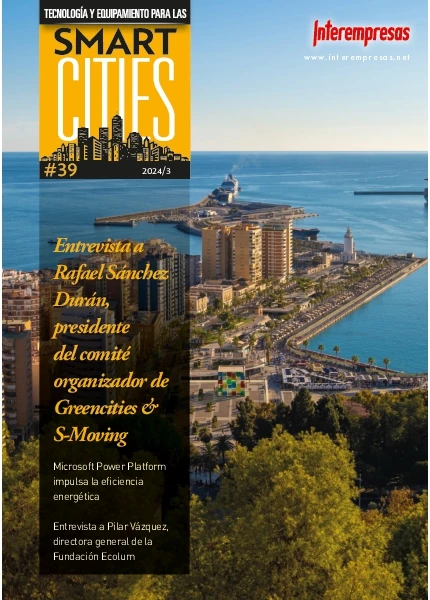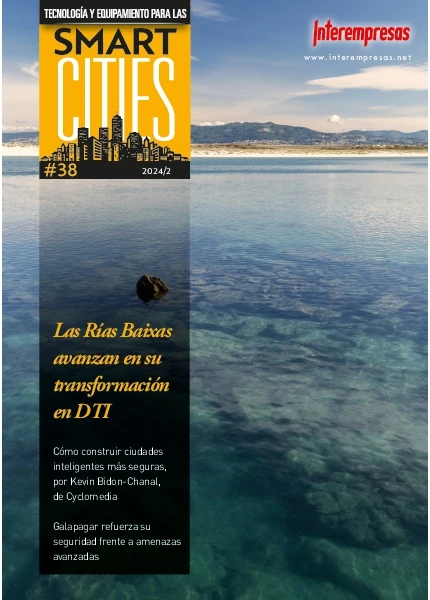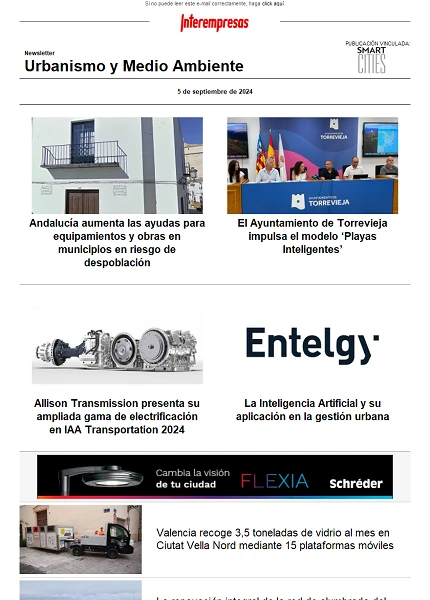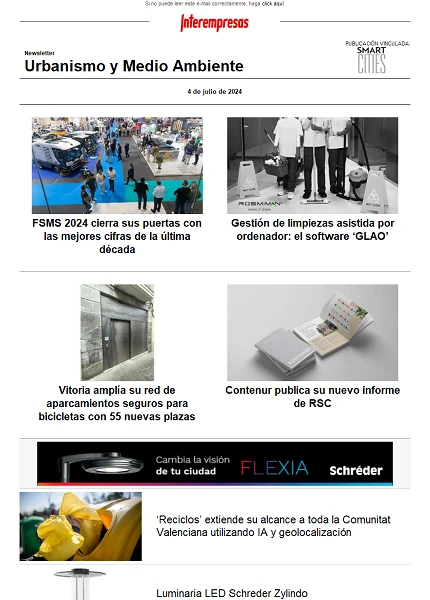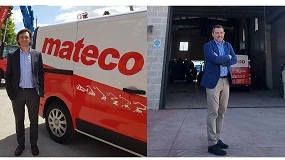The European bus of the future is under way
The managers of the project System of European Buses of the Future (EBSF), in which it participates the Centre of Investigation of the Transport of the Polytechnical University of Madrid (UPM), have gathered recently in Brussels for clausurar this initiative. Also to explain the applications set up to date in some cities, between them Madrid, to do more attractor trucks this service by means of new technologies applied to vehicles and infrastructures.
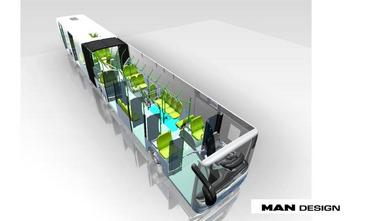
This study, that is funded by the VII Program Mark of the European Union and in which they participate 50 public entities and deprived of 11 European countries, defines an intelligent system of pioneering vehicles and infrastructures integrated cheese cheese in the urban stages of the continent. Operators of public transport, the national and international associations of public transport, the local authorities, the manufacturers of buses and centres of investigation or quality consultancy have devoted four years to improve the image of the bus systemses in the urban and suburban zones.
For testar the new buses have done proofs in 7 European cities: Madrid (Spain), Bremerhaven (Germany), Budapest (Hungary), Rome (Italy), Goteburgo (Sweden), Rouen and Brunoy (France).
The Centre of Investigation of the Transport of the Polytechnical University of Madrid (TRANSyT-UPM), directed by the professor Andrés Monsoon, has centred his investigation in the evaluation, diffusion and exploitation of the results. It has developed, together with other universities, a system of evaluation and measure of the impacts on the quality of the service, the efficiency in the operation and the opinion of the travellers on the services of information, the improvement of puntualidad, etc.
According to the researcher of the UPM, Rocío Cascajo, “the results obtained in the evaluation of the seven cases of study show that the majority of the performances implemented have resulted successful and valued very positively by the travellers, that have manifested in the surveys realised that the quality of the service had improved 35% of average thanks to these measures. The best valued have been the referents to the quality of the service and the easy access for people with disabilities”.
Bus with guided optical
The new technologies are improving the operation of the public transport, in particular, of the buses. In fact, it exists in Spain the TVRC (Transport in Road Reserved of Castellón) from the year 2008, that consists in a hybrid bus with guided optical that circulates in platform reserved and has an innovative design, similar to the tram.
The guided optical drives the vehicle without need of driver, and achieves an optimum approach to the platform of the stop, leaving a minimum space between andén and vehicle, and guarantees a greater accessibility. For the moment, only it uses the guided optical when the bus approximates to the parada. This system robotizado would be possible in all the route of the line, but the costs would increase enormously.
In opinion of Monsoon, that has coordinated to the researchers of the UPM in this project, “the option to do without driver for the moment do not think that was possible, since the new technologies are intelligent, but can fail. Besides, a lot of passengers are adherents of the existence of drivers, especially the greater people, since it gives them more hygiene, at the same time that they can serve them of support anytime”.
On the other hand, in the bus of the future the passengers will be able to access to an information in real time on the route and the incidences that can arise while they travel, and the platforms of access will be enabled for disabled people. The possibility to carry bicis also contemplates in this European initiative.
Other innovations that could include the new designs will direct to improve the comfort (for example, favouring the traffic in the interior of the vehicle, using notes that do not need the contact), the hygiene and the visibility of the traveller (greater lighting and big ventanales to observe the outside).
All these elements will serve to do faster, effective and comfortable the urban trip in bus and equate it to the metre, trying compete with the trip in car. “The measures that have in this sense have been to improve the reliability of the time of trip reducing the uncomfortable wait in stops. On the other hand, also the information to the driver and to the operator has allowed to improve the speed of operation and reduce the incidents in the line.
The advantages to have more doors
Equally have been valued very positively the fact that the new buses have more doors: 4 in the case of Gotemburgo and 5 in the ones of Budapest, so that it reduces the time of rise and descent in a 10-15%, what reduces the wait in the stop and diminishes the total time of trip. Another measure that reduces the time in unemployed is the rediseño of the interior of the bus, doing it wider and better for a correct flow of passengers”, affirm experts of the TRANSyT-UPM.
This study also is oriented to improve the ergonomic conditions of the cabin of the driver from diverse recordings in video and of the recreation of a maqueta that has been tested by the drivers of buses of diverse European cities. The data collected during the proofs and interviews could reflect in a group of European Guidelines for the ergonomic design of the place of work of the drivers of bus.
With regard to the environingingmental subject, Monsoon shows his worry for keeping free cities of the polución generated by the public transport. For this end considers indispensable the utilisation of clean fuels by part of some efficient buses regarding consumptions and broadcasts. “In fact, in a lot of Spanish cities 100% of the fleet has broadcasts reduced (using GNC and biodiesel, mainly). It does not conceive a bus of the future that do not use a fuel of broadcasts reduced".
“Like this –continues the researcher–, in the project EBSF has tested in Budapest an engine diesel 320 HP, of 6 cylinders, that fulfils with the standards EEV (imposes broadcasts extremely low of particles). This engine has allowed a reduction of the broadcasts contaminantes and of the consumption of fuel. In Gotemburgo, also has realised a learning to the drivers on echo-driving (efficient driving), with which has showed a reduction in the consumption of fuel, in addition to a softer driving and comfortable”.
Madrid participates actively in this project to través distinct initiatives that have put in practice in six lines of buses interurbanos that circulate between Majadahonda and Moncloa. They have centred in instrumenting 30 buses and 6 stops with an innovative system and multimodal in real time to offer to the users all the information (on buses, vicinities and traffic in the BUS-VAO of the To6) through several means (web, SMS, bluetooth). This integrated cheese cheese information in real time allows to the user choose the way of transport in function of the real conditions of congestion of the traffic, time of trip expected, and time of wait in stops.
Regarding the quality of the Madrilenian buses, the director of the Centre of Investigation of the Transport of the Polytechnical University of Madrid, Andrés Monsoon, indicates: “The ones of the EMT of Madrid are one of the most modern fleets and of quality of Europe. But it does not treat only to improve the vehicle, but it is necessary to act besides, and of conjoint way, on the infrastructure and on the operation of the service”.
“In this sense, the EMT already is endowed of intelligent systems of transport, like the SAE that, in addition to informing to the user of the state of the service in real time, allows to improve the exploitation to reduce the wait in stops. In a lot of cities have implanted already the notes without contact that reduce the time of access; it seems that already it is working in this and the credit young of transports already has this option for the zone To”.
"But it is necessary to take into account –continues the expert–, that the EMT has a fleet of 2.100 buses, and an annual demand of 423 million travellers, by what results very complicated and costly the investment for the migration of the magnetic note to the technology without contact. It is not necessary to change all a system of buses of a city, but it suffices with going implanting measured little by little, for like this achieve attract more travellers to the bus, and reach a more sustainable mobility in our cities”.
Regarding the infrastructure, the professor Monsoon signals that “here yes that it would be necessary to increase the length of the lanes existent bus in the capital, and especially do that they respect . In the actuality, a 6 % of the total of length of the network of lines of buses has lane bus in Madrid: 94 km. The endowment of lanes reserved for the circulation of the buses considers paramount to achieve an improvement of the time of trip with regard to the private vehicle”.

